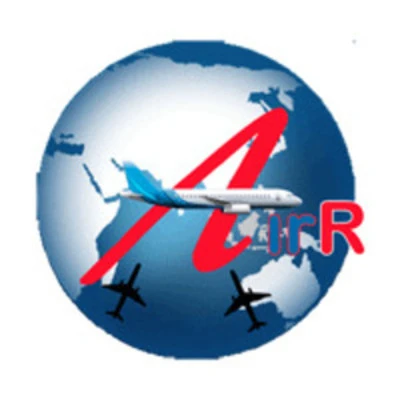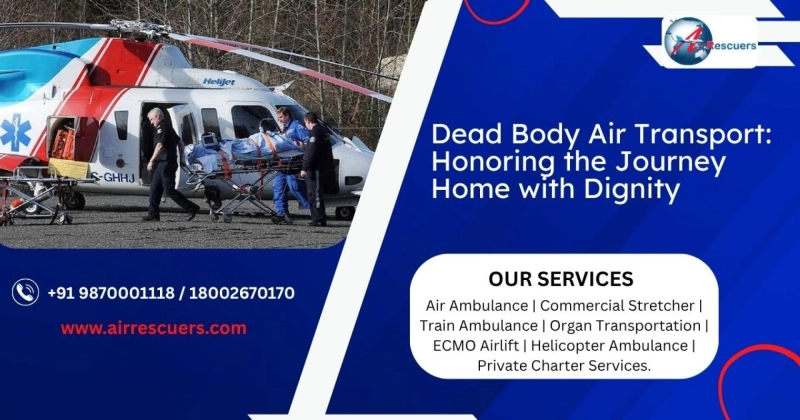The loss of a loved one is among life’s deepest and most heartbreaking sorrows. The grief becomes even more overwhelming when death occurs far from home—whether in a different city, state, or country. In such moments, ensuring the dignified and timely return of the deceased to their final resting place becomes a priority for the grieving family. This is where dead body air transport plays a crucial role.
Dead body air transport involves the organized and lawful movement of human remains by air, across domestic and international locations. This process demands careful handling, compliance with legal protocols, medical certifications, and compassionate coordination to ensure a respectful transfer.
When Is Dead Body Air Transport Required?
The need for air transport of mortal remains arises in various circumstances, including:
- Demise during travel or relocation
- Death in a remote location without access to funeral arrangements
- Migrant or international worker passing away abroad
- Tourist fatalities in unfamiliar regions
- Patients transferred for treatment who do not survive
Families often face emotional turmoil along with logistical confusion. Quick, reliable, and respectful air transport helps them focus on mourning rather than procedures.
Types of Dead Body Transport by Air
There are two common modes of air transfer:
1. Commercial Airline Cargo
Most commercial airlines have dedicated cargo departments that handle human remains. These are placed in specially designated compartments within the aircraft, following strict packaging and documentation guidelines. It's an economical option used for both domestic and international flights.
2. Chartered Flights
For quick or remote access, chartered aircraft can be arranged to directly carry the remains and even accompany grieving family members. These are used when urgency, convenience, or direct route access is essential.
Essential Preparations Before Air Transport
Dead body air transport services requires multiple preparatory steps, all of which must be handled delicately and within legal frameworks:
1. Medical Certification of Death
A certified medical officer is required to issue an official death certificate clearly stating the cause of death. This is the first document needed for clearance.
2. Police or Magistrate Clearance
In cases of unnatural or accidental deaths, legal clearance from local authorities is mandatory. Postmortem reports or police NOCs may also be required.
3. Embalming
To preserve the body during air travel, embalming is essential. Certified embalmers treat and prepare the remains in accordance with global health standards.
4. Coffin and Packing
The embalmed body is placed in a sealed coffin with zinc lining to prevent leakage or contamination. The coffin must be air-sealed and labeled correctly.
5. No Objection Certificate (NOC)
An NOC from the local airport authority or public health officer is required before handing over the remains to the airline.
6. Airline and Consular Documentation
For international transport, consular approval and a passport copy of the deceased are required.
Airport and Airline Guidelines
Each airline has specific policies for dead body cargo. The weight, packaging standards, and documentation checklist vary depending on whether the transport is domestic or international. Most airlines require:
- At least 6–12 hours’ prior notice
- Embalming and sealing confirmation
- Booking confirmation from a registered funeral or air transport provider
- Original documents and photocopies for verification
- Cargo booking through official freight handlers
Estimated Costs Involved
The expense of transporting a deceased individual by air can differ depending on various influencing factors:
Factor
Approximate Impact
Distance and Route
Longer distances, especially international, increase the cost
Airline Charges
Vary by airline, weight, and documentation required
Coffin and Embalming
Coffin types and embalming can affect expenses
Handling and Clearance
Includes hearse van, mortuary storage, and airport coordination
Chartered Flights
Substantially higher, but faster and more direct
For domestic air cargo, charges can range from ₹30,000 to ₹90,000, while international repatriation may cost ₹1.5 lakh to ₹5 lakh or more, depending on the destination.
Timeline and Delivery
Generally, domestic air transport can be arranged within 12–24 hours of documentation readiness. International repatriation may take 2–5 working days, especially if consular involvement or special documentation is required. Upon landing, the remains are handled with utmost respect and carefully handed over to the appointed funeral coordinator or the awaiting family members.
Importance of Professional Coordination
Handling a loved one’s remains with care requires both emotional sensitivity and procedural accuracy. Errors or hold-ups in documentation can lead to serious and emotionally taxing outcomes. That’s why many families rely on experienced teams who can:
- Arrange transportation logistics end-to-end
- Prepare embalming and coffin documentation
- Coordinate with airlines, hospitals, police, and embassies
- Provide on-ground support at both departure and arrival airports
- Offer 24/7 assistance throughout the process
Role of Air Rescuers
One of the most trusted names in this space, Air Rescuers, has helped hundreds of grieving families transport mortal remains across India and internationally. With a dedicated team familiar with the documentation process, legal clearances, and emotional needs of the family, they ensure that everything—from embalming to final delivery—is managed smoothly and respectfully.
Cultural and Religious Sensitivity
Transporting the dead is not just a legal formality—it’s a deeply emotional and spiritual act. Professionals handling dead body air transport must understand religious customs related to cremation, burial, and mourning. Timely repatriation enables families to perform last rites as per their traditions and beliefs.
International Repatriation Challenges
Bringing back a body from a foreign country involves:
- Language barriers
- Differing regulations on embalming or burial
- Time zone coordination
- High costs for permits and approvals
- Travel restrictions during health crises (like pandemics)
Yet, with experienced handlers and embassies working together, these hurdles can be navigated efficiently.
Final Thoughts
In times of mourning, the return of a loved one’s body to their home soil offers immense comfort to grieving families. Dead body air transport is more than a logistical process—it is a responsibility rooted in dignity, compassion, and respect. With proper coordination, transparent procedures, and timely execution, it ensures that the final journey is made with honor.


